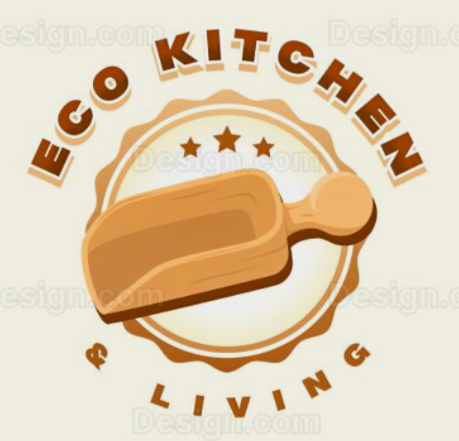
The Timeless Wooden Cutting Board
Share
The Timeless Wooden Cutting Board: Why Every Eco-Friendly Kitchen Needs One
Introduction
When you think of an eco-friendly kitchen, the cutting board may not be the first tool that comes to mind. Yet, this simple, everyday item plays a huge role in food preparation—and in sustainability. Choosing the right cutting board can protect your knives, keep your food safe, and reduce plastic waste. Among all the options available—plastic, glass, bamboo—wooden cutting boards remain the gold standard for cooks who value tradition, durability, and eco-conscious living.
The History of Wooden Cutting Boards
Wooden cutting boards have been used for centuries in kitchens around the world. Before the invention of plastics, cooks relied on solid wood surfaces to chop vegetables, carve meats, and knead dough. Even today, professional chefs often prefer wood because of its natural antibacterial properties and its ability to withstand years of use with proper care. A wooden cutting board is not just a tool—it’s a kitchen companion that can last for decades.
Wooden vs. Plastic and Glass Cutting Boards
When shopping for a cutting board, you’ll notice a variety of materials. Each has its benefits, but when it comes to health, sustainability, and performance, wood consistently comes out on top.
-
Plastic Cutting Boards: While lightweight and inexpensive, plastic boards wear down quickly. Over time, knife cuts create grooves that can harbor bacteria. Microplastic shedding is also a growing concern.
-
Glass Cutting Boards: Stylish but impractical, glass is tough on knives. Using one regularly can dull or even chip your blades. They also tend to be slippery, making them less safe.
-
Wooden Cutting Boards: Wood is gentle on knives, naturally antimicrobial, and biodegradable. Unlike plastic, wood won’t release harmful microparticles into your food.
The eco-friendly choice is clear: a wooden cutting board combines function, safety, and sustainability.
Why Wooden Cutting Boards Are Eco-Friendly
Sustainability is at the heart of wooden cutting boards. Here’s why they’re the eco-smart choice:
-
Renewable Resource – Wood is harvested from trees, a renewable natural material when sourced responsibly.
-
Durability – A quality cutting board can last years, reducing waste.
-
Biodegradable – At the end of its life, a wooden cutting board will naturally break down, unlike plastic.
-
Less Wasteful – Since they last longer, you buy fewer replacements, saving both money and resources.
If you’re building a kitchen that aligns with eco-conscious values, a wooden cutting board is an easy, impactful step.
Protecting Your Knives with Wood
Ask any chef: your knife is only as good as the board you use. Wooden cutting boards are gentle on knife edges, preserving sharpness and reducing wear. Compared to glass or ceramic, wood offers a slight “give” that prevents chipping. Over time, this means less sharpening, fewer knife replacements, and better cooking experiences.
Choosing the Best Wooden Cutting Board
Not all wooden boards are created equal. Here are some popular types to consider:
-
Maple Cutting Boards – Known for hardness and durability.
-
Walnut Cutting Boards – Rich in color and gentler on knives.
-
Teak Cutting Boards – Naturally water-resistant.
-
Bamboo Boards – Technically grass, but eco-friendly and lightweight.
💡 Tip: Look for boards certified by the Forest Stewardship Council (FSC) to ensure the wood was sustainably sourced.
👉 Here are some highly-rated wooden cutting boards on Amazon:
-
[Maple End-Grain Cutting Board – Durable and classic design]
-
[Walnut Wooden Cutting Board – Elegant and knife-friendly]
-
[Bamboo Eco Cutting Board Set – Affordable and sustainable option]
(Insert your affiliate links here using Amazon SiteStripe once approved.)
How to Care for a Wooden Cutting Board
With a little care, your wooden cutting board can last for decades. Follow these steps:
-
Clean After Each Use – Wash with warm water and mild soap. Never soak in water or put in the dishwasher.
-
Dry Immediately – Towel dry and stand upright to prevent warping.
-
Oil Regularly – Use food-grade mineral oil or beeswax conditioner every few weeks to keep the wood moisturized.
-
Sanitize Naturally – Sprinkle coarse salt, scrub with half a lemon, then rinse. This removes odors and bacteria naturally.
Taking care of your board not only extends its life but also makes your kitchen routine more sustainable.
Conclusion
A wooden cutting board is more than just a place to chop vegetables—it’s a timeless piece of kitchen history, a guardian of your knives, and a sustainable alternative to disposable plastics. By choosing wood, you’re making a small but powerful commitment to healthier cooking and a greener planet.
So the next time you prepare a meal, let your cutting board remind you: sustainability can start with the simplest tools.
